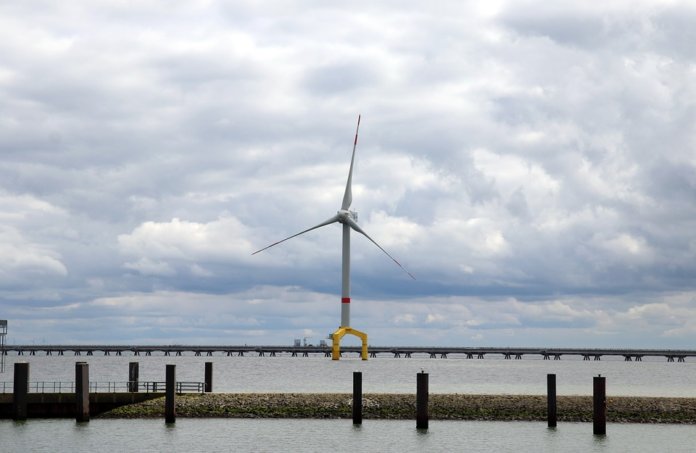GE Renewable Energy and the U.K.’s Offshore Renewable Energy (ORE) Catapult have announced a $11 million, four-year research partnership aimed at enhancing offshore wind safety and operating costs.
The new “Stay Ashore!” program, focused on the U.K. market, is built on three pillars:
- Reliability by design, which is primarily focused on validation of key wind turbine components;
- Enabling full remote operability and troubleshooting of the turbines through advanced digital functionality, to reduce the need to go offshore for unplanned events; and
- Using robotics for planned maintenance events, including in areas that are difficult to access.
The collaboration is part of GE’s broader offshore wind strategy for the U.K.: collaborating with local partners to drive down the cost of electricity and improve the reliability of offshore wind projects.
“We are a nation of innovators, and this latest $11 million research partnership between GE Renewable Energy and the government’s ORE Catapult is a fine example of how we’re working with industry to embrace cutting-edge technology to ensure the U.K. offshore sector stays ahead of the pack,” says Claire Perry, the U.K.’s minister for energy and clean growth.
“By eliminating unplanned offshore human intervention through increasing productivity with digital and robotic tools, in addition to our Haliade-X 12 MW performance and design features, we will contribute significantly to reducing the cost of offshore wind energy,” notes John Lavelle, president and CEO of GE’s offshore wind business.
The ongoing collaboration between GE Renewable Energy and ORE Catapult will launch technology innovation challenges for U.K. small to medium enterprises and the academic community.
Andrew Jamieson, CEO of ORE Catapult, says, “This further strengthening of ORE Catapult’s partnership with GE Renewable Energy will see significant investment in nationally important R&D, growing not only our expertise but providing opportunities for the U.K. supply chain to capture domestic and international market share in an offshore wind market expected to be worth $39 billion per year by 2030.”





Current offshore wind energy projects use Radial Bladed rotors. It is simple and well known over years.
But unfortunately , the resulting Rotor Becomes very massive, since the power rating is related to the cubic power of the blade length. Hence, its practical usage is limited to 12 MW/unit.
If we use axial flow helical bladed rotor ( US 9,537,371 B2), its practical power rating can be extended up to 50 MW/rotor, as desired by US DOE.
If you have any inquiry, please contact us at: ka@wtswind.com. I want to confirm my thoughts.
Thank you.